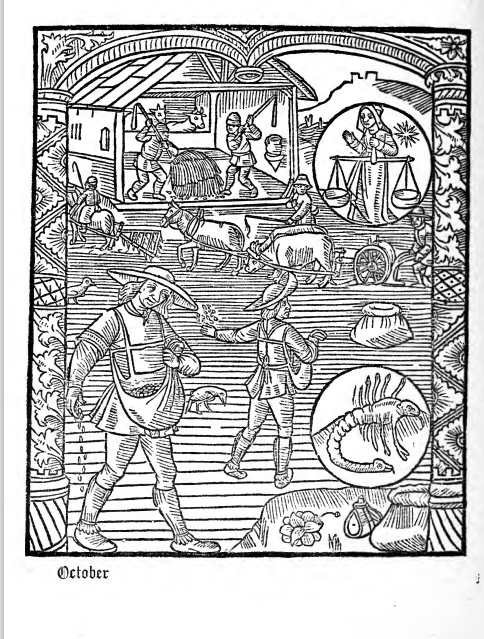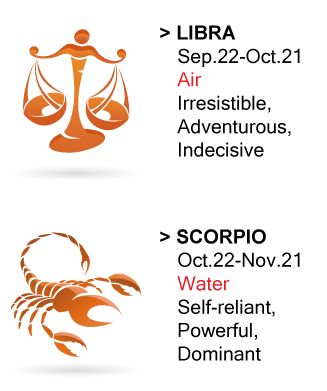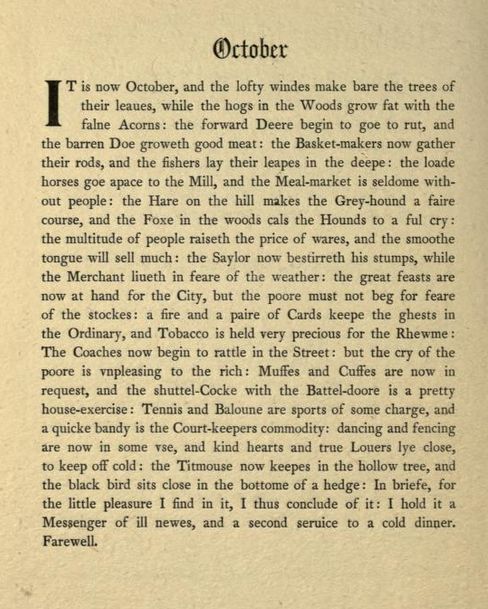
The 15th Century French illustration in the Kalendar of Shepherds shows October as a busy month, when the cereals are being flailed, the fields ploughed and sown. Perhaps winter wheat or barley or peas and beans? The star signs are the Scales of Libra and the Scorpion of Scorpio.

In the Roman world it was, originally the 8th Month (octo=8) but then they added January and February to the year, and it became the 10th Month, It was their time to celebrate the new wines of the Harvest. In Britain, the wine harvest is late September to October, but in hotter climes can be from July. But the grapes need to be processed, and the Romans thought that new wine was health giving and celebrated it in October.
The 16th Century English text of the Kalendar of Shepherds (see below) shows what a busy month it was, but the writer comes down hard against the month as ‘a messenger of ill news’ the harbinger of cold dark nights. But for many people, October is a beautiful month, when the leaves bring a sophisticated array of rustic colours, and perhaps make the wooded countryside more beautiful than at any time of the year.

It can still be warm enough to go for pleasant walks, and the surfeit of the harvest and the culling of animals meant there was plenty to eat before winter austerity begins.
The Venerable Bede tells us that the month was called Winterfylleth, in the 8th Century because the English divided the year into Summer and Winter and Winter began on the first full moon of October. This means that this year winter begins on 17th October, the peak of the Hunter’s Moon, which is also a supermoon.
In Welsh, it is Hydref, which also means Autumn, and for the Welsh it was the last month of Autumn and the last month of the year, as the new year, and winter starts on 1st November. The same is true of the Irish Calendar, Autumn is called Fómhair, and October Deireadh Fómhair which means ‘End of Autumn’. Is there any sense in ending Autumn this early?Astronomically autumn ends at the Winter Solstice and meteorologically at the end of November. So the Celtic Autumn ends a whole month or more earlier than the other measures. My very personal view is that Winter begins on November 5th more often than not. This is an evening we often spend outside watching the fireworks displays to celebrate Guy Fawkes’ Night, and it always seems like the first time since the winter that you feel really cold, and need hat, gloves and scarves.

About the Kalendar of Shepherds.
The Kalendar was printed in 1493 in Paris and provided ‘Devices for the 12 Months.’ I’m using a modern (1908) reconstruction of it using wood cuts from the original 15th Century version and adding various text from 16th and 17th Century sources. (Couplets by Tusser ‘Five Hundred Parts of Good Husbandrie 1599, and text descriptions of the month from Nicholas Breton’s ‘Fantasticks of 1626. This provides an interesting view of what was going on in the countryside every month.
https://wellcomecollection.org/works/f4824s6t
To see the full Kalendar, go here:
First Published in Autumn 2024
Discover more from And Did Those Feet
Subscribe to get the latest posts sent to your email.
